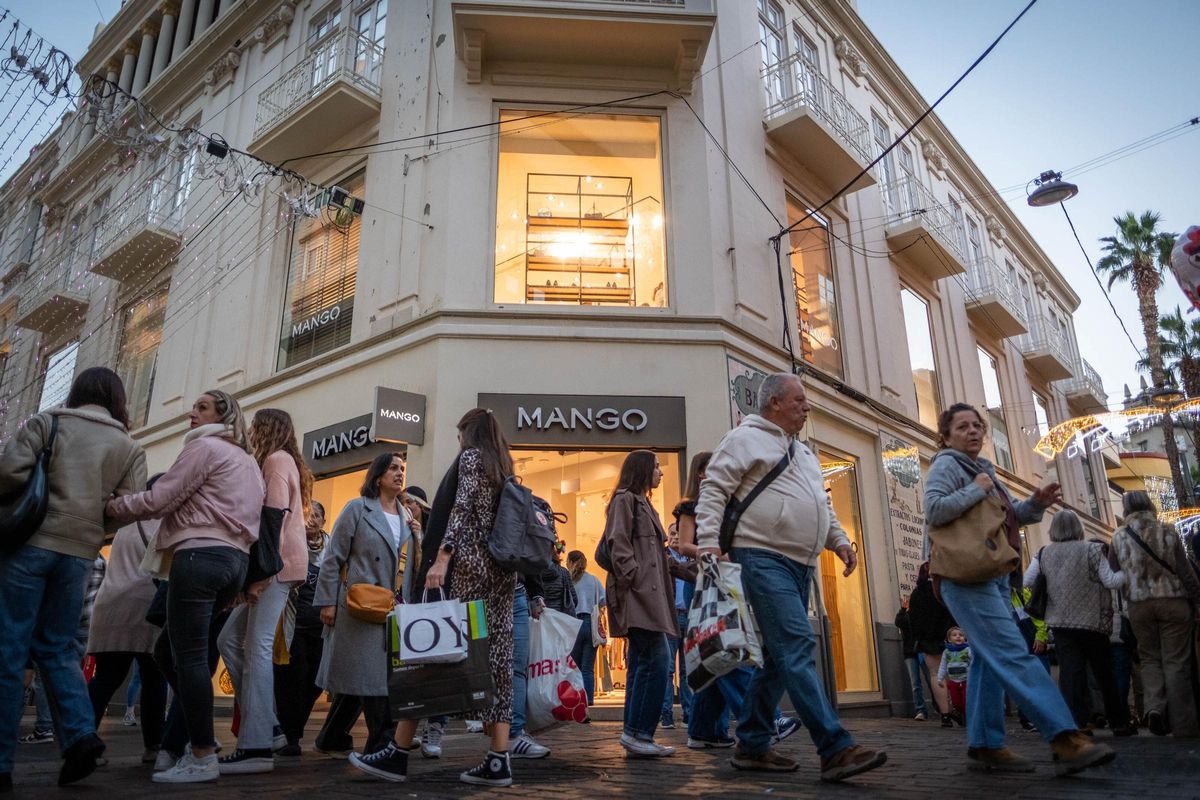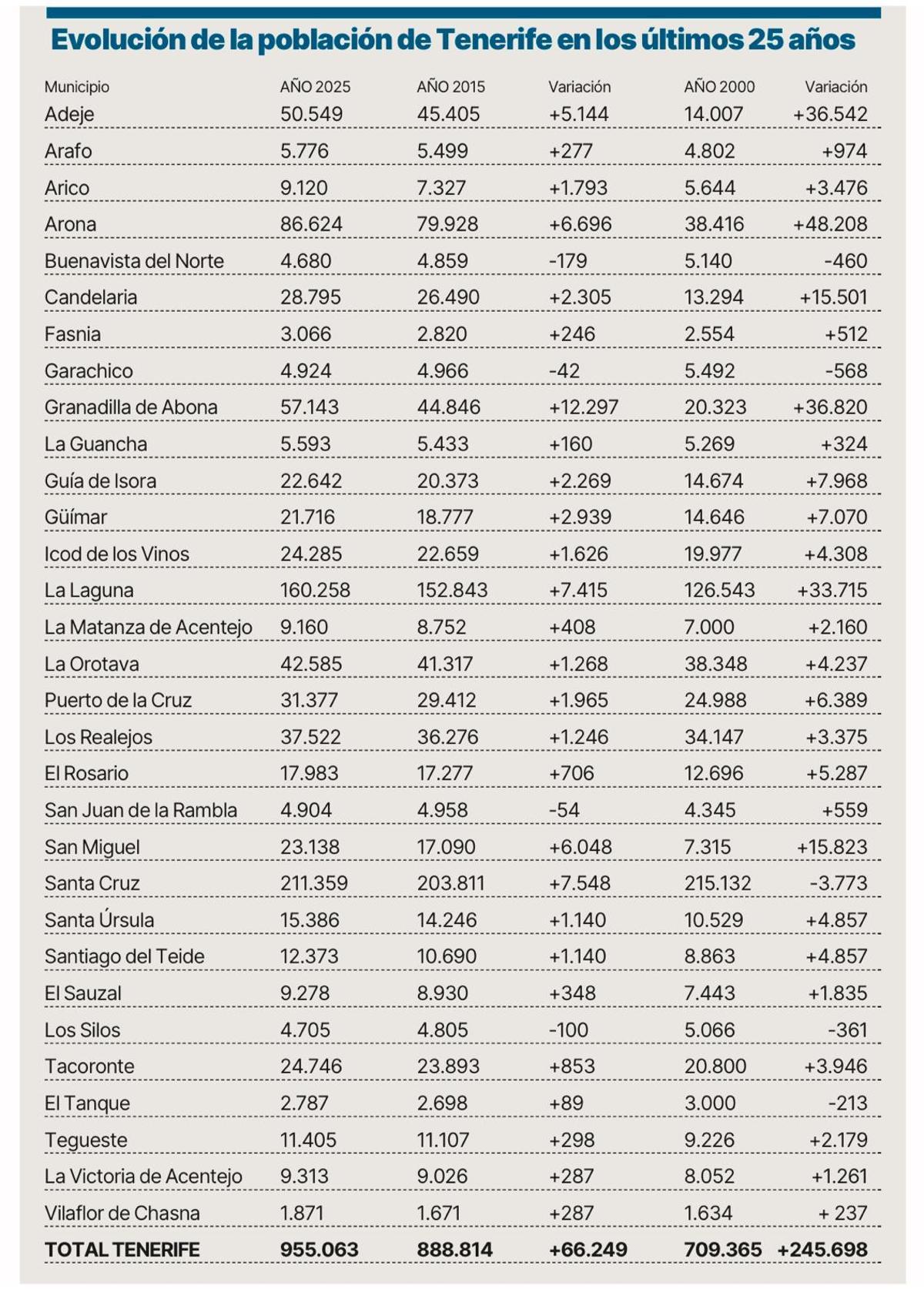Tenerife is set to surpass one million residents within the next seven years, by 2032. This is based on the demographic forecast if the growth rate of the past decade continues. According to the latest update from the Municipal Register of Spain, which includes statistics from the end of 2024, the total population of Tenerife stands at 955,063 residents, which is an increase of 66,248 since 2015. This indicates that over the past 10 years, the population has increased by an annual average of 6,624.
One of the key takeaways from the new registry is that the most accurate statistics available to assess the demographic evolution of municipalities in Spain. Another finding regarding Tenerife highlights that the southern municipalities, driven by the significant influence of tourism, are expanding at the expense of other populous regions on the island, such as the metropolitan area and the north. Consequently, if the trend of the last decade continues, there will be a greater number of residents in the southern municipalities compared to the two most populated areas and their surroundings: Santa Cruz, La Laguna, El Rosario, and Tegueste.
The southern surge is relentless and has transformed the demographic landscape over centuries, beginning with the Castilian conquest at the end of the 15th century, during which the municipalities with the highest population were precisely those in the metropolitan region. However, this shifted with the tourism boom of the 1990s. Presently, the municipalities along the southern coast—from Candelaria to Guia de Isora—boast a combined population of 322,813 residents, while the metropolitan area (401,005 residents) and the north (231,245) have seen their growth restricted.

Shoppers on Castillo Street during last Christmas. / Andrés Gutiérrez
This southern shift creates a disparity in the island’s population. As a result, in the southern region, municipalities such as Adeje, Arona, and Granadilla de Abona continue to grow; meanwhile, those in the north are experiencing a decline.
A comparison over the past 25 years shows a staggering rise in the commuter towns linked to the major tourist destinations of Tenerife. The latest registry update reveals that Granadilla de Abona has increased its population by 12,297 since 2015, and by 36,820 since 2000. The town of Granadilla currently has 57,143 residents, making it the fifth most populous municipality in Tenerife, up from 20,323 in 2000.
Adeje provides another noteworthy example. At the beginning of this century, it had a mere 14,007 residents; today, that figure has soared to 50,549. Similarly, the adjacent town of Arona has grown from 36,416 inhabitants in 2000 to 86,624 now, making it the third most populous locale in Tenerife and the fifth in the Canary Islands.
Notable growth figures over the past 25 years include San Miguel de Abona, which has risen from 15,823 to 23,138 residents; Güímar (up by 7,070 to 21,716), Candelaria (an increase of 15,501 to reach 28,795), Guia de Isora (up by 7,698 to total 22,642), and Santiago del Teide (an increase of 4,857 to reach 12,313).

Population statistics for each municipality at the end of 2024. / Ed
When analysing the past 25 years among the three major regions, the data illustrates a significant shift in trend for this 21st century. Back in 2000, the northern municipalities had a larger population (199,596) compared to those in the south (146,172), specifically outnumbering them by 53,424. Today the situation is reversed: the south has 91,568 more residents than the north. This disparity is expected to continue to widen in the forthcoming years if the current trends remain consistent.
The issue of overpopulation in the south is concerning, especially considering that these municipalities attract 77% of the island’s tourists, resulting in a fluctuating population of around 5 million in 2024. However, the declining population in the north also raises alarms, particularly in the four municipalities in the Baja Island, a region referred to as Tenerife emptied. Buenavista del Norte, Garachico, Los Silos, and El Tanque are the only areas on the island experiencing population losses since the start of this century.
This is a slow yet steady process, and it reflects a paradox in a debate which is primarily focused on concerns regarding excessive population growth. While a majority call for measures to curb this development, regions in the Baja Island are seeking ways to attract new residents. Over the past 25 years, Garachico has witnessed a loss of 568 inhabitants; Buenavista del Norte, 460; Los Silos, 361; and El Tanque, 213. Collectively, these four municipalities have lost a total of 17,107 residents.
The discussion surrounding demographics is highly relevant among political parties and civic organisations. A commission has even been established in the Canary Islands Parliament to address the demographic challenges and population balance within the archipelago. The latest political proposal emerged last Saturday during a Canarian coalition convention in Tenerife.
The nationalists are once again advocating for a Residence Law. José Manuel Bermúdez, the mayor of Santa Cruz de Tenerife, has called for a regulation that manages the influx of new residents. Another nationalist official, Clari Pérez, the first deputy mayor of Arona, emphasised that population growth in the Canary Islands has reached “unsustainable levels.”
Subscribe to continue reading















